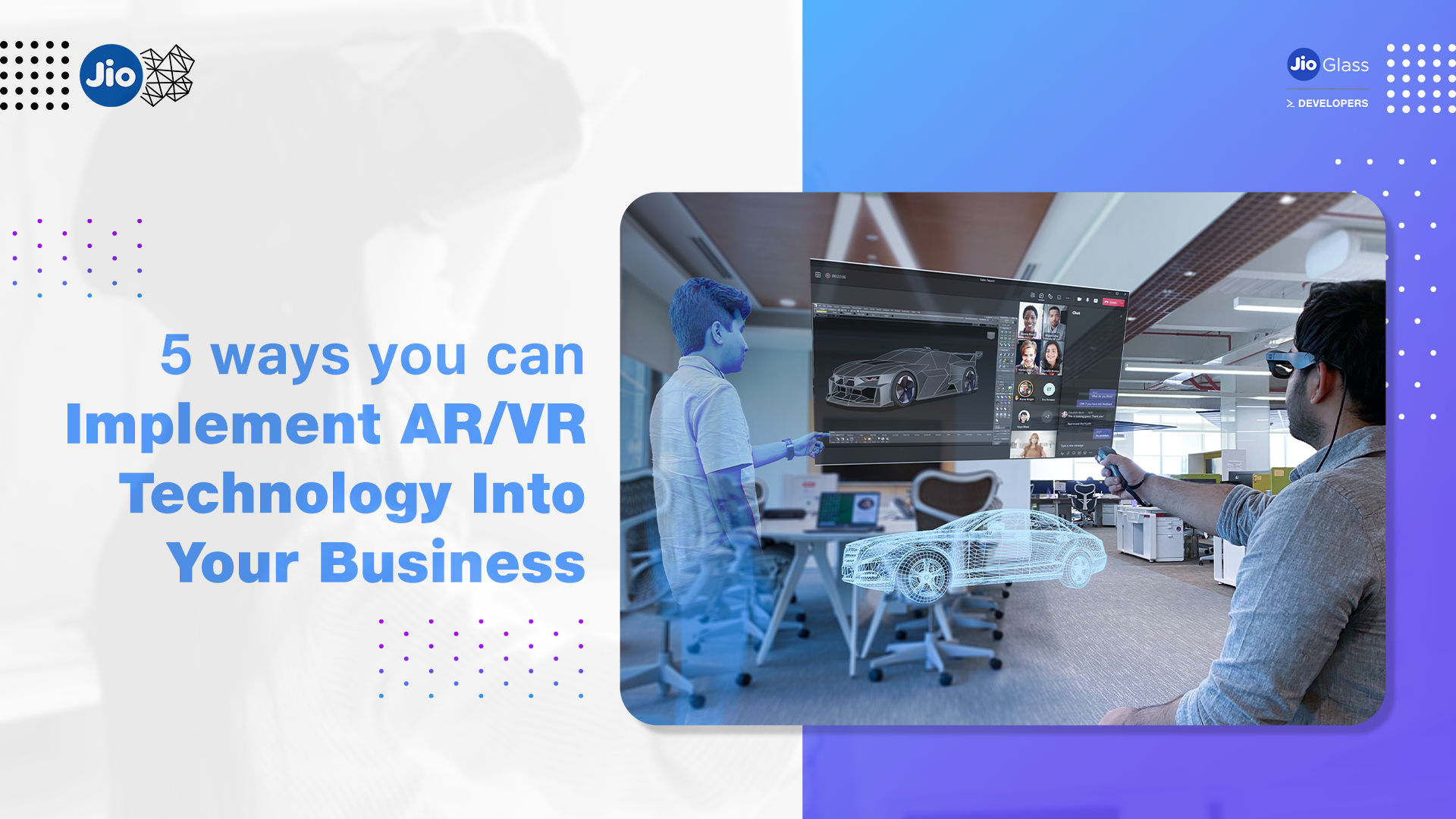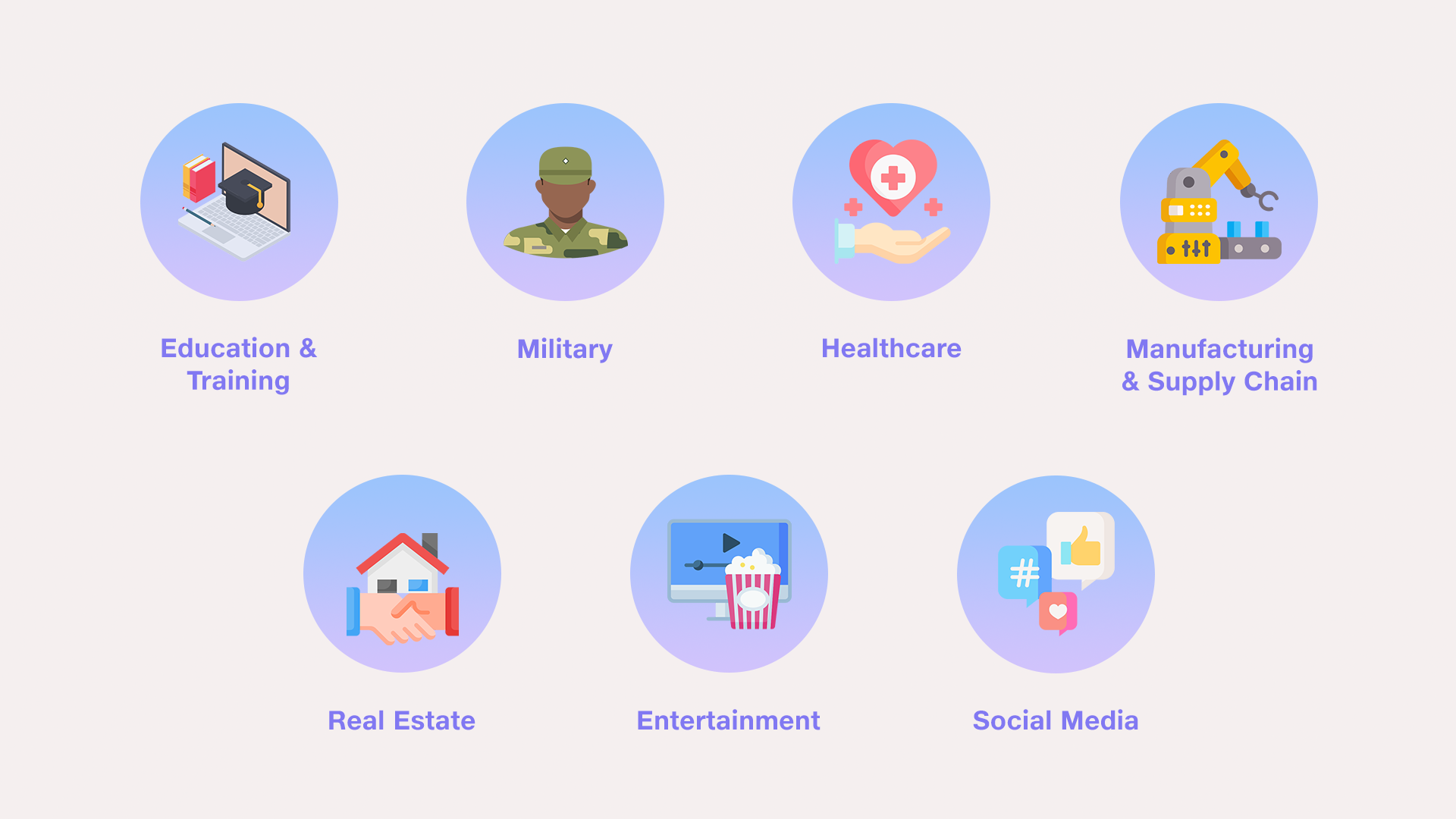5 ways you can implement AR/VR technology into your Business

5 ways you can implement AR/VR technology into your Business
There is a buzz in the market. You hear things like fortune 500s and even your competitors are using AR/VR technology for their clients and employees. What are they using this technology for? How are they implementing it?
AR/VR technology interest is rising, and innovators are exploring its business relevance, benefits, and changes it will bring in all industries. Businesses are adopting this new age technology for better workforce enablement and customer experience & interaction.
AR/VR technology comes under the umbrella term- Extended Reality (XR). While VR allows you to experience a fully immersive reality, AR augments the current reality with elements like avatars or display of information in holographic format. Both these technologies come together to form mixed reality. This mixed reality metaverse is the answer to ‘how to scale business in 2022.’
Here are some exciting examples of organizations adopting AR/VR technology in their day-to-day business
- Tata Consultancy Services (TCS): Tata group’s jewelry arm, Tanishq, recently launched its new collection in the metaverse where the guests can try-on expensive products, virtually. Their next project is a metaverse museum for Tamil Nadu government, India.
- Mesh by Microsoft: Mesh is a workplace metaverse environment where employees can join to conduct meetings and collaborate on multiple projects. This will eventually support training and L&D for all employees in the virtual space.
- AccuVein: This healthcare miracle app that allows doctors and nurses to determine where the veins are. It conducts an AR diagnosis on patients that helps detect several types of nerve damage or for taking blood tests.
How is implementing AR/VR beneficial for businesses?
Businesses need to change with changing technologies. Big enterprises are pacing towards tech advances and in the next few years, AR/VR will be the technology to deliver cost-effective solutions. We have listed some ways to get visible to your existing and potential customer base using AR/VR technology. You can not only engage your consumers but also use AR/VR for your employees. Let us find out how this futuristic tech is going to be indispensable for businesses across the globe:

- Learning & Training
Corporate training is required for both hardcore skills like coding, digital marketing, etc., and soft kills development like time management, communication, etc. AR/VR makes learning effective and engaging. The PWC research proves how employees learn 4X times faster than classroom training on average. They are also 275% more confident to use the learnings in practicality when they studied using AR/VR technology.
Learners are less distracted and have a stronger emotional connection, while employers save costs rather than on e-learning modalities, especially for soft skills training. By combining classroom studying, e-learning, and virtual training together, what corporates have is a multimodal approach that can help transform enterprises' training methods. - Remote Assistance
Technical engineers always must be on sight to help their customers or their support team regarding problems. With AR/VR technology, agents can use remote assistance to resolve from afar by seeing an immersive live imaging of the machinery and guiding the user to unplug certain cable wires, fix internet, or clean machine filters. This method is cost-effective and helps retain customers because of quick resolution. - 3D Models Design
Graphic engineers use computer graphics to create 3D representation of physical world objects. Corporates can make use of VR to create virtual objects of their products for customer trials, studying the model to upgrade and for training purposes. Gaming companies can use this to create fantasy games or metaverse reality. - Virtual Try-On
Digitalization has a major impact on retail businesses, especially on customers’ shopping behavior. To make the process smoother, brands like Nykka, Ikea, Farfetch, Prada, e.l.f. cosmetics, etc., have installed Virtual Try-Ons for their products. Customers can check products on their face or avatars to see how they will look on them. This has transformed the entire shopping experience and overall customer journey of users. - Advertising
AR advertisements catch the attention of users, giving an elemental surprise over normal ad. For example, Pepsi created a buzz by using AR at a bus stop, keeping people waiting for a bus entertained by showing creative augmented elements. Even though this was not a product advertisement, it still caught a buzz and Pepsi got limelight as a brand.
Another AR advertising idea was LEGO using AR on packaging of catalogues where users could scan a code and the products inside would come to life on screen.
Implement AR/VR technology in your business today!
These use-cases just touch the few of many capabilities of AR/VR. The strength and multitude of these technologies keep increasing with time, and digitalization will completely transform in the coming decade. Analysts predict that by 2025, globally, the AR market will go beyond $48.6 billion. All big and small companies are leveraging the use wherever the opportunity arises. It continues to evolve and directly affects productivity, efficiency, growth and facilitates customer satisfaction.
If you own a business in 2022, you cannot miss out on AR/VR, the future of technology. Fortunately, enterprises do not need a huge budget to make clever use of this trending, futuristic tech for enhancing their operations and customer experience. You can register to buy JioGlass device for your enterprise to implement AR/VR solutions; fill this form now!


